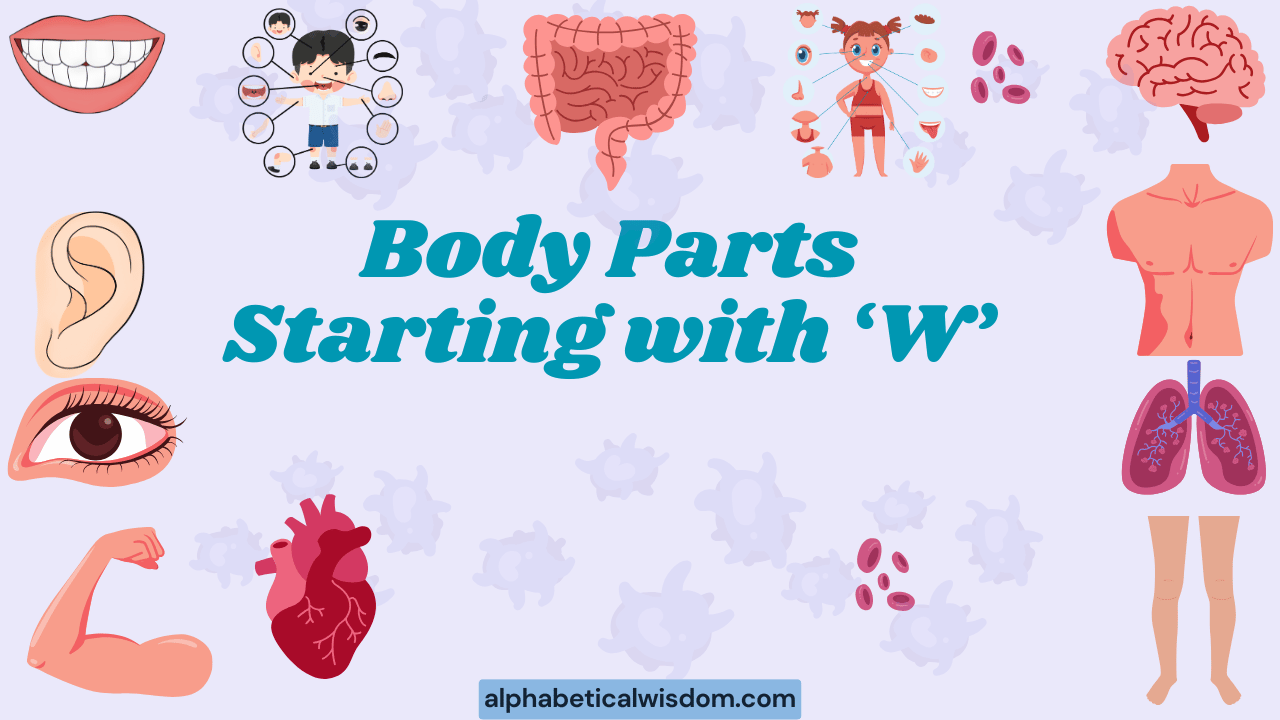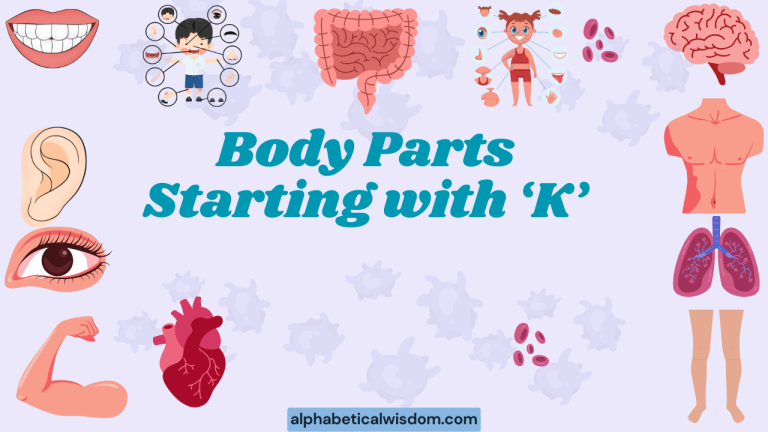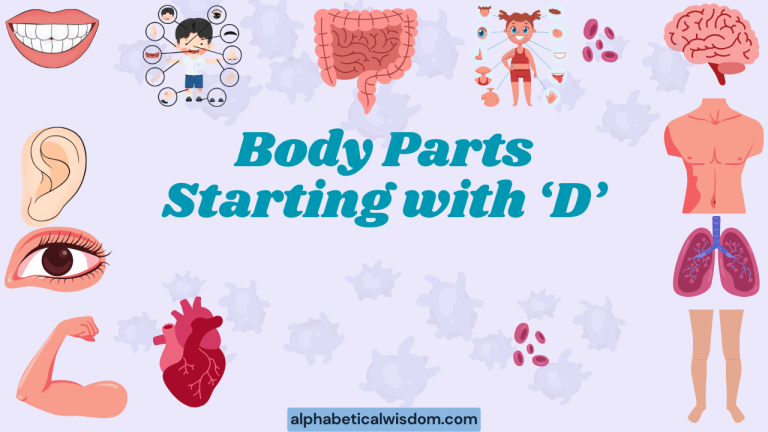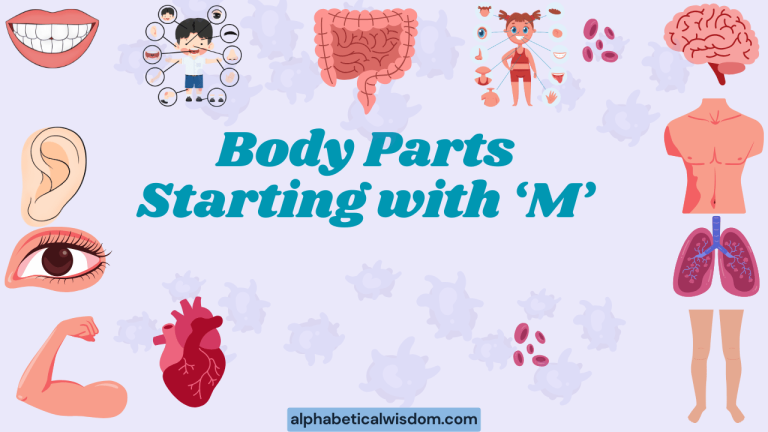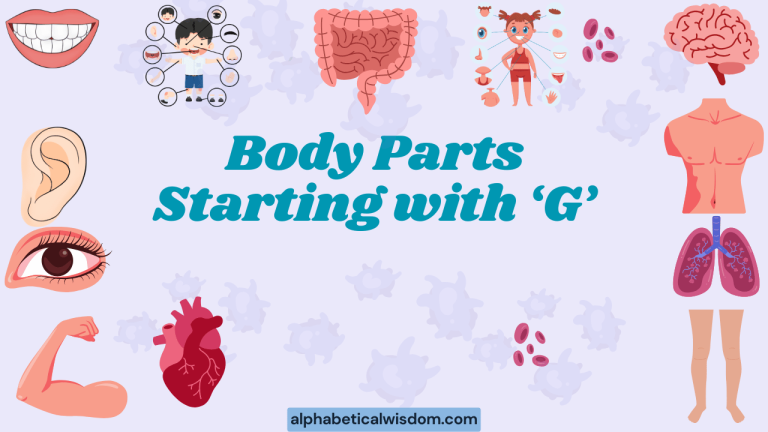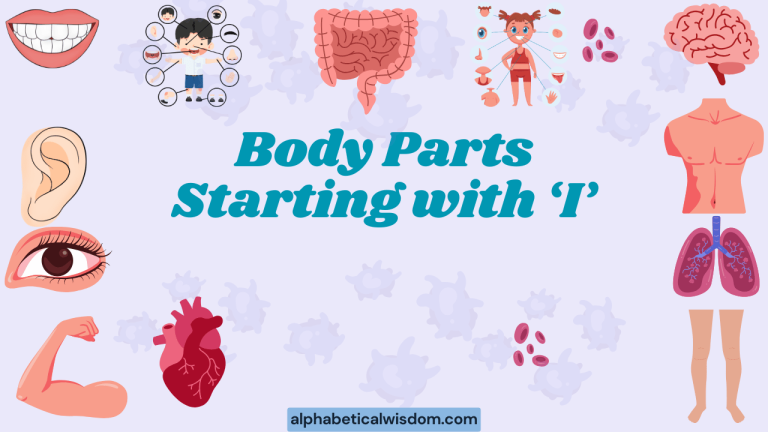Body Parts Starting with W: A Comprehensive Grammar Guide
Understanding the vocabulary related to body parts is fundamental for effective communication in English. This article focuses specifically on body parts that start with the letter “w,” exploring their definitions, usage, and grammatical contexts.
Mastering these terms enhances your ability to describe physical attributes, discuss health-related issues, and comprehend idiomatic expressions. This guide is beneficial for English language learners of all levels, from beginners building basic vocabulary to advanced speakers aiming for nuanced expression.
By the end of this article, you will have a strong grasp of these essential terms and how to use them correctly.
This guide will provide a comprehensive overview, including definitions, examples, usage rules, and common mistakes, along with interactive practice exercises to reinforce your learning. Whether you are a student, a healthcare professional, or simply someone interested in expanding your English vocabulary, this article will serve as a valuable resource.
Table of Contents
- Introduction
- Definition of Body Parts Starting with W
- Structural Breakdown
- Types and Categories
- Examples
- Usage Rules
- Common Mistakes
- Practice Exercises
- Advanced Topics
- FAQ
- Conclusion
Definition of Body Parts Starting with W
The human body is an intricate system, and while the number of body parts starting with the letter “w” is limited, understanding their significance is crucial. Primarily, we focus on “wrist” and “waist.” Each plays a distinct role in anatomy and language.
The wrist is the joint connecting the hand to the forearm. It is a complex structure comprising several bones, ligaments, and tendons, allowing for a wide range of motion. Understanding its function is essential in both everyday activities and medical contexts.
The waist refers to the part of the body between the ribs and the hips. It is often associated with physical appearance and is a key measurement in clothing and health assessments. The waist’s circumference can be an indicator of overall health and fitness.
Structural Breakdown
Understanding the structural elements of the wrist and waist provides a deeper insight into their functions and potential vulnerabilities. The wrist, being a complex joint, has a detailed anatomy.
The waist, while not a joint, is defined by the surrounding skeletal and muscular structures.
Wrist Structure
The wrist is composed of eight carpal bones arranged in two rows. These bones are connected by ligaments, providing stability and flexibility.
The tendons of the forearm muscles pass through the wrist, enabling hand and finger movements. The intricate arrangement allows for movements like flexion, extension, abduction, and adduction.
The carpal bones are: Scaphoid, Lunate, Triquetrum, Pisiform (proximal row), and Trapezium, Trapezoid, Capitate, Hamate (distal row). These bones articulate with the radius and ulna of the forearm and the metacarpal bones of the hand.
This articulation allows for a wide range of motion, making the wrist a critical component for hand function.
Waist Structure
The waist is defined by the area between the rib cage and the hips. It is largely determined by the abdominal muscles, back muscles, and the underlying skeletal structure.
The size and shape of the waist can vary significantly depending on factors like genetics, muscle mass, and body fat percentage.
Key muscles influencing the waist’s appearance include the rectus abdominis, obliques (internal and external), and the quadratus lumborum. These muscles contribute to posture, core stability, and movements like bending and twisting.
The skeletal structure, particularly the shape of the rib cage and pelvis, also plays a role in defining the waist’s contours.
Types and Categories
While we are primarily focusing on ‘wrist’ and ‘waist’, it’s useful to consider how these terms are used in different contexts and variations.
Wrist Variations
The term “wrist” can be modified to describe specific conditions or locations. For example, “carpal tunnel” refers to a condition affecting the median nerve in the wrist.
“Wrist sprain” describes an injury to the ligaments of the wrist. Understanding these variations is essential for accurate communication in medical and fitness contexts.
Waist Variations
The term “waist” can be used to describe different aspects of the waistline. “High-waisted” refers to clothing that sits above the natural waist.
“Low-waisted” indicates clothing that sits below the natural waist. In health contexts, “waist circumference” is a specific measurement used to assess abdominal obesity.
Examples
Understanding how to use “wrist” and “waist” in sentences is crucial for effective communication. The following examples illustrate their usage in various contexts, including anatomical descriptions, idiomatic expressions, and medical discussions.
Anatomical Examples
These examples illustrate the usage of “wrist” and “waist” in describing anatomical features and movements.
The following table provides examples of using “wrist” and “waist” in anatomical contexts:
| Sentence | Explanation |
|---|---|
| She wore a bracelet on her wrist. | Describes the location of an accessory. |
| He injured his wrist playing tennis. | Indicates a sports-related injury. |
| The doctor examined the range of motion in her wrist. | Refers to a medical assessment. |
| The dancer has a very flexible wrist. | Describes a physical attribute. |
| The weightlifter uses wrist wraps to support his wrists. | Explains protective gear. |
| The tailor measured her waist for the dress. | Describes a measurement for clothing. |
| He tightened his belt around his waist. | Indicates an action related to clothing. |
| The patient complained of pain in his lower back and waist. | Refers to a physical discomfort. |
| Her waist is smaller than her hips. | Describes a physical proportion. |
| The corset cinched her waist tightly. | Explains the effect of a garment. |
| The surgeon performed a delicate procedure on the patient’s wrist. | Describes a medical intervention. |
| The athlete strained his wrist during the competition. | Details a sports-related injury. |
| The gymnast’s routine required incredible flexibility in her wrists. | Highlights a physical skill. |
| The paramedic immobilized the injured man’s wrist. | Describes a first-aid procedure. |
| She felt a sharp pain in her wrist after the fall. | Indicates a physical sensation. |
| The doctor advised him to wear a wrist brace for his sprained wrist. | Suggests a treatment for an injury. |
| She wrapped a scarf around her waist to keep warm. | Describes a practical use. |
| The doctor measured the patient’s waist circumference. | Refers to a health assessment. |
| He adjusted his pants at the waist. | Indicates a clothing adjustment. |
| She wore a decorative belt around her waist. | Describes an accessory. |
| The trainer instructed her to focus on strengthening her core muscles around her waist. | Refers to fitness training. |
| The child clung to his mother’s waist. | Describes a physical action. |
| The belt buckle rested just above his waist. | Indicates the position of an accessory. |
| She noticed her dress was looser around the waist. | Describes a change in clothing fit. |
| The tailor altered the dress to fit snugly at the waist. | Explains a clothing alteration. |
Idiomatic Examples
These examples showcase the use of “wrist” and “waist” in idiomatic expressions, adding color and nuance to language.
The following table presents examples of using “wrist” and “waist” in idiomatic expressions:
| Sentence | Explanation |
|---|---|
| He slapped his wrist for being late. | “Slap on the wrist” means a mild reprimand. |
| She needed to tighten her belt around her waist to save money. | “Tighten one’s belt” means to reduce expenses. |
| The project was so easy it was done with a flick of the wrist. | Implies something done effortlessly. |
| Her waist seemed to get smaller every day. | Refers to a gradual reduction in size. |
| He had the company wrapped around his wrist. | Implies control or influence over the company. |
| She had to watch her waist during the holidays. | Means to be careful about gaining weight. |
| He was given a wrist-slap for his minor infraction. | Another example of a mild reprimand. |
| She was known for her tiny waist. | Describes a physical attribute. |
| He kept a close watch on his waistline. | To be mindful of one’s weight. |
| She wanted to reduce her waist size for the wedding. | A goal related to physical appearance. |
| The magician performed the trick with a flick of the wrist. | Implies a quick, skillful movement. |
| The dancer’s flowing movements accentuated her waist. | Highlighting the shape of the waist. |
| He was told to tighten his belt and cut back on expenses. | Means to reduce spending. |
| She always wore clothes that flattered her waist. | Choosing clothes to enhance one’s figure. |
| He had the whole team wrapped around his wrist with his charm. | Implies strong influence over the team. |
| She was trying to maintain a healthy waist circumference. | Relates to health and fitness. |
| With a flick of the wrist, he opened the lock. | Describes a quick, skillful action. |
| She was conscious of her waist size when shopping for clothes. | Being aware of one’s body shape. |
| He received a mere slap on the wrist for his mistake. | A light punishment. |
| She was working hard to slim down her waist. | Trying to reduce waist size. |
| The pickpocket was quick, removing the wallet with a flick of the wrist. | A swift and skillful action. |
| She wore a belt to accentuate her waist. | Highlighting the waist with an accessory. |
| He had everyone wrapped around his wrist with his charisma. | Implies a strong, charming influence. |
| She wanted to achieve a smaller waist through exercise and diet. | A fitness and health goal. |
| The artist painted the scene with a delicate flick of the wrist. | Describes a fine, controlled movement. |
Medical Context Examples
These examples illustrate the usage of “wrist” and “waist” in medical contexts, highlighting their relevance in healthcare discussions.
The following table provides examples of using “wrist” and “waist” in medical contexts:
| Sentence | Explanation |
|---|---|
| The X-ray revealed a fracture in her wrist. | Refers to a medical diagnosis. |
| The doctor advised him to measure his waist circumference regularly. | Relates to a health monitoring recommendation. |
| Carpal tunnel syndrome affects the nerves in the wrist. | Describes a specific medical condition. |
| A high waist circumference can indicate increased health risks. | Connects waist size to health outcomes. |
| The physical therapist worked on improving the flexibility of his wrist. | Describes a rehabilitation process. |
| Obesity is often associated with a larger waist size. | Relates obesity to waist measurement. |
| The patient complained of chronic pain in her wrist. | Indicates a long-term medical issue. |
| The doctor measured his waist to assess his risk for diabetes. | Links waist measurement to disease risk. |
| The surgeon performed arthroscopic surgery on the patient’s wrist. | Describes a surgical procedure. |
| The nurse recorded the patient’s waist measurement during the check-up. | Indicates a routine medical assessment. |
| The athlete’s wrist was immobilized to prevent further injury. | A medical measure taken to protect an injury. |
| The doctor explained that her back pain could be related to her waist and posture. | Connecting body parts to a medical issue. |
| He was diagnosed with a ganglion cyst on his wrist. | Describes a specific medical condition. |
| The nutritionist advised her to reduce her waist size for better health. | Relates waist size to overall health. |
| The physical therapist used exercises to strengthen the muscles around his wrist. | Describes a rehabilitation technique. |
| The doctor warned that a large waist circumference could increase the risk of heart disease. | Links waist size to cardiovascular health. |
| The occupational therapist helped her regain fine motor skills in her wrist. | Describes a therapeutic intervention. |
| The patient’s waist-to-hip ratio was assessed as part of the health screening. | Indicates a health assessment metric. |
| The sports medicine doctor examined the athlete’s injured wrist. | Describes a medical examination. |
| The physician recommended lifestyle changes to reduce his waist circumference. | Suggests a health improvement strategy. |
| The specialist treated the inflammation in her wrist with medication. | Describes a medical treatment. |
| The dietician advised him on foods to avoid to maintain a healthy waist. | Relates diet to waist management. |
| The chiropractor adjusted the alignment of her wrist. | Describes a chiropractic treatment. |
| The health educator emphasized the importance of monitoring waist size for preventive care. | Highlights the significance of waist measurement in healthcare. |
Usage Rules
Proper usage of “wrist” and “waist” involves understanding their grammatical roles and contextual relevance. These terms can function as nouns, and their usage is governed by standard English grammar rules.
“Wrist” as a noun: The word “wrist” is a noun referring to the joint connecting the hand and forearm. It can be used in both singular and plural forms (“wrists”).
“Waist” as a noun: The word “waist” is a noun referring to the part of the body between the ribs and hips. It is commonly used in contexts related to clothing, health, and physical appearance.
Subject-verb agreement: When using “wrist” or “waist” as the subject of a sentence, ensure that the verb agrees in number. For example: “My wrist *hurts*,” “Her waist *is* small.”
Adjectives and modifiers: Use adjectives to describe the characteristics of the wrist or waist. For example: “a slender wrist,” “a narrow waist.”
Common Mistakes
Avoiding common mistakes is key to mastering the correct usage of “wrist” and “waist.” Here are some frequent errors and how to correct them.
Confusing “waist” with “waste”: “Waist” refers to a body part, while “waste” refers to discarded material. *Incorrect: “She has a small waste.” Correct: “She has a small waist.”*
Misusing plural forms: Ensure you use the correct plural form when referring to more than one wrist. *Incorrect: “Both of my wrist hurts.” Correct: “Both of my wrists hurt.”*
The following table showcases common mistakes and their corrections:
| Incorrect | Correct |
|---|---|
| She has a small waste. | She has a small waist. |
| Both of my wrist hurts. | Both of my wrists hurt. |
| He injured his wrest playing sports. | He injured his wrist playing sports. |
| The tailor measured her wast for the dress. | The tailor measured her waist for the dress. |
Practice Exercises
Reinforce your understanding with these practice exercises designed to test your knowledge of “wrist” and “waist.”
Fill-in-the-Blanks
Complete the following sentences with the correct word: “wrist” or “waist.”
The following table contains fill-in-the-blank questions to test your knowledge:
| Question | Answer |
|---|---|
| 1. She wore a bracelet on her _____. | wrist |
| 2. The tailor measured her _____ for the new dress. | waist |
| 3. He sprained his _____ playing tennis. | wrist |
| 4. The belt was too tight around his _____. | waist |
| 5. Carpal tunnel syndrome affects the _____ . | wrist |
| 6. A large _____ circumference can be a health risk. | waist |
| 7. She flexed her _____ to demonstrate its flexibility. | wrist |
| 8. He adjusted his pants at the _____. | waist |
| 9. The watch fit snugly around his _____. | wrist |
| 10. The dancer’s costume accentuated her _____. | waist |
Sentence Correction
Identify and correct the errors in the following sentences.
The following table contains sentences with errors that need to be corrected:
| Incorrect Sentence | Correct Sentence |
|---|---|
| 1. She has a very small waste. | She has a very small waist. |
| 2. He injured his wrest during the game. | He injured his wrist during the game. |
| 3. Both of my wrist are hurting. | Both of my wrists are hurting. |
| 4. The tailor took her wast measurement. | The tailor took her waist measurement. |
| 5. She wore the watch on her wrest. | She wore the watch on her wrist. |
| 6. The doctor checked her wrest for any swelling. | The doctor checked her wrist for any swelling. |
| 7. His pants were tight around his wast. | His pants were tight around his waist. |
| 8. She twisted her wrest while gardening. | She twisted her wrist while gardening. |
| 9. The belt accentuated her wast. | The belt accentuated her waist. |
| 10. He needed surgery on his wrest. | He needed surgery on his wrist. |
Translation Exercise
Translate the following sentences into English, using “wrist” or “waist.”
The following table provides sentences to translate to English correctly using “wrist” or “waist”:
| Original Sentence (Spanish) | English Translation |
|---|---|
| 1. Ella lleva una pulsera en su muñeca. | She wears a bracelet on her wrist. |
| 2. El sastre midió su cintura para el vestido. | The tailor measured her waist for the dress. |
| 3. Se lastimó la muñeca jugando al tenis. | He injured his wrist playing tennis. |
| 4. El cinturón estaba demasiado apretado alrededor de su cintura. | The belt was too tight around his waist. |
| 5. El síndrome del túnel carpiano afecta los nervios de la muñeca. | Carpal tunnel syndrome affects the nerves in the wrist. |
| 6. Una circunferencia de cintura grande puede ser un riesgo para la salud. | A large waist circumference can be a health risk. |
| 7. Ella flexionó su muñeca para demostrar su flexibilidad. | She flexed her wrist to demonstrate its flexibility. |
| 8. Se ajustó los pantalones en la cintura. | He adjusted his pants at the waist. |
| 9. El reloj le quedaba ajustado alrededor de la muñeca. | The watch fit snugly around his wrist. |
| 10. El traje de la bailarina acentuaba su cintura. | The dancer’s costume accentuated her waist. |
Advanced Topics
For advanced learners, exploring the etymology and nuanced usage of “wrist” and “waist” can provide a deeper understanding of the English language.
Etymology: The word “wrist” comes from the Old English word “wrist,” meaning “joint connecting the hand to the arm.” The word “waist” comes from the Old English word “wæst,” meaning “growth” or “shape.” Understanding the origins of these words can provide insights into their historical usage and evolution.
Figurative language: “Wrist” and “waist” can be used in figurative language to convey specific meanings. For example, “to have someone wrapped around your wrist” implies control or influence. “To watch your waistline” means to be mindful of your weight.
FAQ
Here are some frequently asked questions about the usage of “wrist” and “waist.”
- What is the difference between “wrist” and “waist”?
The “wrist” is the joint connecting the hand to the forearm, while the “waist” is the part of the body between the ribs and the hips. They are two distinct body parts with different functions and locations.
- How do you use “wrist” in a sentence?
You can use “wrist” in a sentence to describe injuries, accessories, or physical attributes. For example, “He injured his wrist playing basketball,” or “She wore a bracelet on her wrist.” Always ensure subject-verb agreement.
- How do you use “waist” in a sentence?
You can use “waist” in a sentence to describe clothing fit, physical appearance, or health measurements. For example, “The tailor measured her waist for the dress,” or “A large waist circumference can indicate health risks.”
- What are some common idioms using “wrist”?
One common idiom is “to slap on the wrist,” which means to give a mild reprimand. Another is “to have someone wrapped around your wrist,” which implies control or influence over someone.
- What are some common idioms using “waist”?
An example of using “waist” is “watch your waistline” which means to be mindful of your weight and diet.
- How is “waist circumference” measured?
“Waist circumference” is measured around the narrowest part of the torso, usually just above the hip bones. It is an important indicator of abdominal fat and overall health risk.
- What is carpal tunnel syndrome?
Carpal tunnel syndrome is a condition that affects the median nerve in the wrist, causing pain, numbness, and tingling in the hand and fingers. It often results from repetitive motions or pressure on the wrist.
- Why is it important to maintain a healthy waist circumference?
Maintaining a healthy waist circumference is important because excess abdominal fat is associated with increased risks of heart disease, diabetes, and other health problems. Regular exercise and a balanced diet can help maintain a healthy waist size.
- What kind of exercises strengthens the wrist?
Exercises that strengthen the wrist include wrist curls, reverse wrist curls, and squeezing a stress ball. These exercises help improve grip strength and stability in the wrist joint.
- How can I improve my posture to benefit my waist?
Improving your posture involves keeping your back straight, shoulders relaxed, and core engaged. Practicing exercises that strengthen your core muscles can also help improve your posture and support a healthy waistline. Additionally, ensure your workstation is ergonomically designed to support good posture.
Conclusion
Mastering the vocabulary related to body parts, specifically “wrist” and “waist,” is crucial for effective communication in English. Understanding their definitions, usage rules, and common mistakes will enhance your ability to describe physical attributes, discuss health-related issues, and comprehend idiomatic expressions.
This comprehensive guide has provided you with the knowledge and practice needed to confidently use these terms in various contexts.
Continue practicing and incorporating these words into your daily conversations and writing. Pay attention to how native speakers use them, and don’t hesitate to ask questions when unsure.
Consistent effort and attention to detail will solidify your understanding and improve your overall English proficiency. Remember, language learning is a continuous journey, and every step you take brings you closer to fluency.
